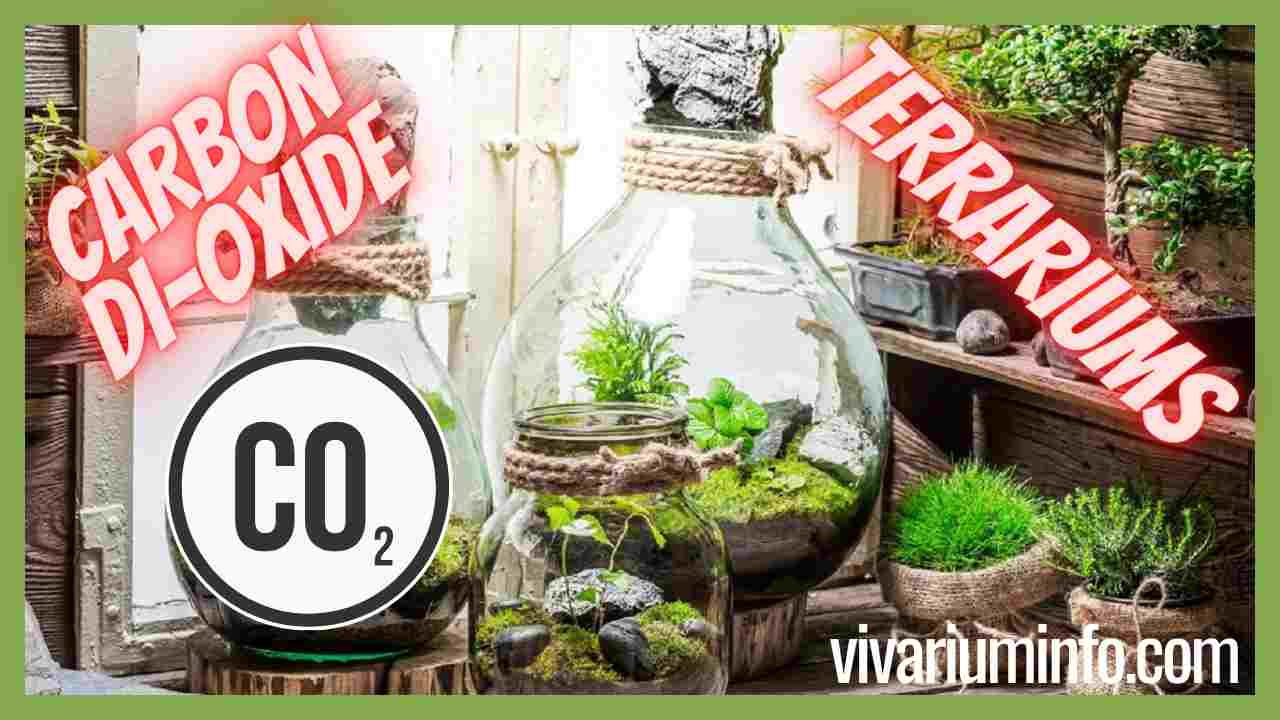Terrariums are fascinating self-sustaining ecosystems, often regarded as mini rainforests or small glass gardens. But if you’ve ever wondered how plants can thrive in a closed terrarium without external air, you’re not alone! How do they survive without fresh oxygen or carbon dioxide (CO2)? Let’s dive into the science behind these captivating creations and uncover the answers to some common questions.
How Do Plants Get CO2 in a Terrarium?
One of the most frequently asked questions about terrariums is: Where does CO2 come from in a closed terrarium? After all, it’s locked up in a glass container! The key to understanding this is the relationship between photosynthesis and respiration.
- Photosynthesis is the process where plants use sunlight, water, and CO2 to produce food (glucose) and release oxygen.
- Respiration, on the other hand, occurs when plants consume oxygen and release carbon dioxide as a byproduct.
During the day, plants absorb sunlight and engage in photosynthesis, which requires CO2. However, at night, the process reverses, and plants consume oxygen, releasing carbon dioxide in return. This cyclical process creates a balance of gases within the terrarium.
Now, since a closed terrarium has limited external air, where does the CO2 come from if the air inside is sealed? The answer lies in the microorganisms and bacteria present in the terrarium. These tiny organisms breathe oxygen and release carbon dioxide as part of their metabolic processes. This additional CO2 helps sustain the photosynthesis process and keeps the ecosystem in balance.
Do Terrariums Need CO2?
Yes, terrariums absolutely need CO2. Plants rely on carbon dioxide for the photosynthesis process, which is how they produce food. Without CO2, plants wouldn’t be able to make glucose, which is essential for growth and survival.
Plants need four key elements to perform photosynthesis:
- Water & Nutrients: Absorbed through the roots.
- Carbon Dioxide: Taken from the air inside the terrarium.
- Sunlight: Absorbed by chlorophyll in the leaves.
- Chlorophyll: A pigment that captures sunlight to produce energy.
Without carbon dioxide, the photosynthesis process would cease, and plants would not have the fuel they need to grow. Therefore, carbon dioxide is an essential component for plant survival in a terrarium.
How Does Photosynthesis Work in a Terrarium?
Photosynthesis is at the heart of plant survival in a terrarium. Here’s how it works in detail:
- Water & Nutrients: Plants take water and nutrients from the soil with the help of their roots.
- Carbon Dioxide: CO2 enters the plant through tiny pores on the leaves called stomata.
- Sunlight: Plants capture sunlight using the chlorophyll in their leaves.
- Chlorophyll: This green pigment helps plants absorb sunlight and convert it into energy.
During the day, plants perform photosynthesis, using sunlight to convert CO2 and water into glucose (food) and oxygen. At night, they switch to respiration, consuming oxygen and releasing CO2, which is then recycled by the process of photosynthesis the next day.
In a closed terrarium, the CO2 required for photosynthesis is mainly derived from the process of respiration, where both the plants and microorganisms contribute to maintaining a balance of gases.
Do Terrariums Run Out of Carbon Dioxide?
As long as there is adequate sunlight, terrariums will not run out of carbon dioxide. Here’s why:
During the day, when sunlight is abundant, plants absorb CO2 through photosynthesis. At night, when photosynthesis stops, plants switch to respiration and consume oxygen while releasing carbon dioxide. This ensures that a continuous supply of CO2 is available for the next day’s photosynthesis.
Even in a closed terrarium without direct access to the outside air, the balance is maintained. If sunlight is insufficient, bacteria and other microorganisms present in the terrarium will also produce CO2 as they respire, keeping the ecosystem functional.
How to Ensure Your Terrarium Has Sufficient CO2
If you’re worried about CO2 levels in your terrarium, don’t fret—nature has it all figured out. Here are a few tips to ensure your closed terrarium thrives:
- Adequate Sunlight: Make sure your terrarium receives enough indirect sunlight. Direct sunlight can overheat the terrarium and disturb the balance of gases.
- Microorganisms: These tiny creatures play an essential role in producing CO2, so it’s important to maintain a healthy balance of soil and organic matter in your terrarium.
- Humidity Control: Humidity levels should also be kept in check to ensure proper transpiration and gas exchange in the closed environment.
If you follow these basic guidelines, your plants will have all the CO2 they need to thrive.
To Sum Up: The Science Behind Terrariums
Terrariums, especially closed ones, are incredible examples of nature’s ingenuity. Plants in terrariums survive and thrive due to the balance between photosynthesis and respiration. They get their CO2 primarily from the process of respiration, aided by the microorganisms that reside within the ecosystem. As long as there is enough sunlight and microorganisms are present, a terrarium will not run out of carbon dioxide.
By understanding the science behind terrariums, you can better appreciate how these miniature ecosystems work and how they create a perfect balance of gases to sustain plant life. So, whether you’re new to terrariums or a seasoned enthusiast, you can now confidently answer all those tricky questions about how plants get CO2 and thrive in a closed environment.
